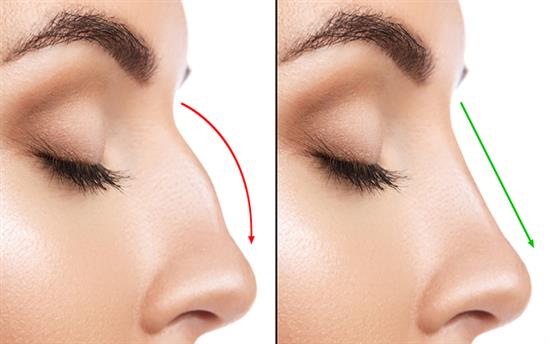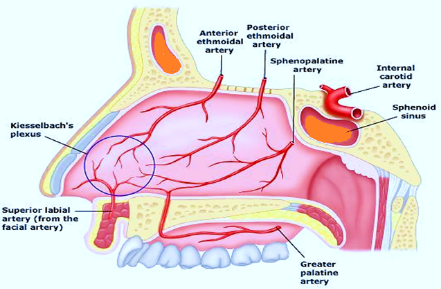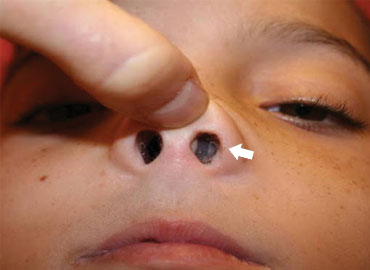Septoplasty

What Is Septoplasty
Septoplastyis a surgical procedure to straighten the bone and cartilage dividing the space between your two nostrils (septum). When the septum is crooked, it's known as a deviated septum. A deviated septum can make it harder to breathe through your nose and can increase the risk of sinus infections due to poor drainage.
During septoplasty, your nasal septum is repositioned to the middle of your nose. This may require your surgeon to cut and remove parts of your nasal septum before reinserting them in the proper position.
Why it's done.
A crooked septum is common. But when it's severe, a deviated septum can block one side of your nose and reduce airflow, causing difficulty breathing through one or both sides of your nose.
What you can expect
Septoplasty straightens the nasal septum by trimming, repositioning and replacing cartilage or bone. The surgeon works through incisions inside the nose. Occasionally it is necessary to make a small incision between the nostrils.
If the nasal bones are crooked and pushing the septum off to one side, it may be necessary to make cuts in the bones of the nose to reposition them. Spreader grafts are small, reinforcing strips of cartilage that can be used to help correct a deviated septum when the problem is along the bridge of the nose. Sometimes these are necessary to effectively straighten the septum.
Septorhinoplasty

What Is Septorhinoplasty
A septorhinoplasty (or ‘nose job’) is an operation to improve the appearance of your nose (rhinoplasty) and to improve how you breathe through your nose (septoplasty).
It involves operating on the bones and cartilage that give your nose its shape and structure and making your septum straight. The septum is the cartilage and bone inside your nose that separates your nostrils.
What Is What are the benefits of surgery?
Your nose should be the size and shape you want, and you should be able to breathe through both nostrils.
Most people who have a successful septorhinoplasty are more comfortable with their appearance.
Endoscopic Cauterization of Nasal Bleed

What Is Endoscopic Cauterization of Nasal Bleed
Nasal cautery, or nasal cauterization, is a procedure used to treat nosebleeds (epistaxis). Nasal cautery is where a chemical or electrical device is applied to the mucous membranes in the nose to stop bleeding.
This procedure can be performed in the office with topical anesthetic or can be performed in an operating room under general anesthesia. Sometimes this procedure is performed in conjunction with other procedures to improve nasal breathing (ie: sinus surgery, nasal endoscopy, nasal cautery or septoplasty)
Why would my child need nasal cautery?
Typically, children benefit from nasal cautery when they have recurrent nosebleeds. These episodes can occur from a prominent blood vessel in the nose that bleeds from trauma (nose picking, rubbing nose, or bumping nose), from drying (dessication) of the mucous membranes lining the nose, or from another reason. Certain underlying medical conditions can make children more prone to nosebleeds, including individual or familial bleeding disorders, platelet disorders, cancers or medications used to treat other conditions.
If an underlying medical condition or medication is the cause of the nosebleeds, first attempts are aimed treating or removing these sources of tendency for bleeding.
In addition, nasal creams, ointments, gels (emollients), nasal saline spray and increased environmental humidification can help improve the nosebleeds by decreasing the dryness in the nose. This makes the nose less prone to bleeding.
Nasal Polyp Removal (Functional Endoscopic Sinus Surgery)

What is Nasal Polyp Removal (Functional Endoscopic Sinus Surgery)
Nasal polyps may present in patients who report perennial nasal congestion, obstruction, and anosmia or hyposmia. In contrast to many individuals who have chronic rhinosinusitis without nasal polyps who present with headache and facial pressure and pain, patients with nasal polyposis generally do not report those symptoms unless they have a concurrent infection. Nasal polyps typically are semitranslucent, pale, gray masses in the nasal cavity.
Nasal polypectomy is a surgical procedure to remove polyps located in the nasal passages. Nasal polyps affect 2-5% of the population [1] and may occur in association with chronic rhinosinusitis, cystic fibrosis, Kartagener syndrome, Samter triad (asthma, nasal polyposis, and aspirin sensitivity), or as an isolated phenomenon
Foreign Body Removal Nose GA

What is Foreign Body Removal Nose GA
This is a simple procedure to remove an object which has become trapped in the nose (usually of a child). The affected nostril is numbed with an anesthetic spray and special forceps are used to remove the offending object. The procedure may be performed in the doctor's office or in the hospital emergency room. Sometimes, where a child is uncooperative, or an object is well embedded, general anesthesia may be necessary.
In adults, foreign bodies may have been lodged in the nose undetected for or even years. Causing discharge and obstruction, they may have become encrusted, requiring removal under general anesthesia.
WHY IS IT PERFORMED?
Most commonly it is small children who are brought to the emergency room with something stuck up their noses -- a peanut, perhaps, or a piece of candy, a button, or a ring. Often this can be expelled with forceful nose-blowing. If not, it must be removed surgically.
